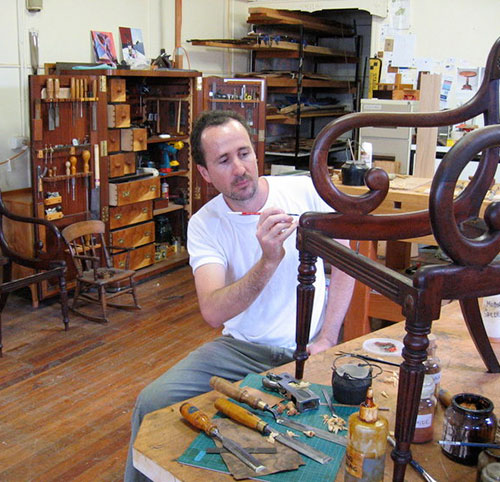Wood furniture is a timeless and elegant addition to any home, but even the most well-crafted pieces can fall victim to damage over time. From scratches and dents to water stains and fading, the wear and tear of everyday life can take a toll on your beloved furnishings. In this article, we will explore effective strategies for preventing and treating wood furniture damage, helping you preserve the beauty and longevity of your prized possessions. Whether you’re a seasoned wood furniture enthusiast or a novice homeowner looking to protect your investment, these tips and tricks are sure to come in handy.

Recognizing Common Causes of Wood Furniture Damage
Wood furniture can add warmth and character to any space, but it is important to be aware of the common causes of damage so that you can prevent and treat them effectively. By recognizing these causes, you can prolong the life of your beloved furniture pieces and keep them looking their best for years to come.
One common cause of wood furniture damage is exposure to sunlight. Over time, UV rays can fade the finish and cause the wood to become dry and brittle. To prevent this, consider placing your furniture away from direct sunlight or using curtains or blinds to block out the rays. Additionally, applying a protective finish or using a UV-resistant polish can help to maintain the wood’s natural beauty.
Another culprit of wood furniture damage is moisture. Excess humidity can cause the wood to warp, while water spills can leave unsightly stains. To protect your furniture, be sure to keep it away from sources of moisture, such as windows or bathrooms. In the event of a spill, be sure to wipe it up immediately and use a wood-safe cleaner to prevent lasting damage.
Scratches and dents are also common issues that can detract from the beauty of your wood furniture. To prevent these, consider using felt pads on the bottoms of chair legs to protect floors, and place coasters under glasses to prevent water rings. If damage does occur, you can repair minor scratches with a touch-up marker or fill in dents with a wood filler. With a little care and attention, you can keep your wood furniture looking its best for years to come.
Key Prevention Strategies for Protecting Wood Furniture
Wood furniture can add warmth and charm to any home, but it is important to take preventative measures to protect it from damage. By implementing key strategies, you can extend the life of your wood furniture and keep it looking its best for years to come.
One effective way to prevent damage to wood furniture is to place felt pads under heavy items or objects that may scratch the surface. This simple but effective measure can help preserve the finish and integrity of the wood. Additionally, using coasters or placemats under glasses and hot dishes can prevent water rings and heat damage.
Regular dusting and cleaning of wood furniture is also essential in maintaining its beauty. Use a soft, lint-free cloth to gently dust the surface, and avoid using harsh chemical cleaners that can strip the finish. For stubborn stains, a mixture of mild soap and water can be used, followed by a thorough drying with a clean cloth.
Lastly, it is important to keep wood furniture away from direct sunlight and sources of heat, as prolonged exposure can cause the wood to warp and fade. By following these preventative strategies, you can ensure that your wood furniture remains in excellent condition and continues to enhance your living space.
Essential Tips for Repairing and Restoring Damaged Wood Furniture
Wood furniture is a beautiful and timeless addition to any home, but over time it can become damaged and worn. Whether it’s scratches, watermarks, or cracks, there are ways to repair and restore your beloved pieces back to their former glory. Here are some essential tips to help you prevent and treat wood furniture damage:
- Regular Maintenance: Dusting and polishing your wood furniture regularly can help prevent scratches and wear from accumulating over time.
- Protective Measures: Use coasters, placemats, and tablecloths to protect your furniture from watermarks, heat damage, and scratches caused by daily use.
- Repairing Scratches: For minor scratches, try using wood markers or touch-up pens to fill in the damaged area. For deeper scratches, consider using wood filler and sanding to smooth out the surface.
- Restoring Finish: If the finish on your wood furniture has worn away, consider refinishing the piece with a fresh coat of stain or varnish to bring back its original luster.
| Damage Type | Treatment |
|---|---|
| Watermarks | Try using a mixture of equal parts vinegar and olive oil to remove watermarks from wood furniture. |
| Cracks | Fill in cracks with wood glue and clamp the pieces together until the glue dries completely. |
By following these tips and taking care of your wood furniture, you can ensure that your pieces remain beautiful and functional for years to come. Remember to always consult a professional if you’re unsure about how to properly repair or restore damaged wood furniture.
In conclusion, taking care of your wood furniture is essential to ensure its longevity and beauty. By following the preventative tips mentioned in this article, you can protect your furniture from damage and maintain its overall condition. But in the unfortunate event that your furniture does suffer from damage, don’t worry – there are always ways to treat and restore it back to its former glory. Remember, a little love and care can go a long way in preserving the beauty of your wood furniture for years to come. So, next time you see a scratch or a water stain, don’t fret – with the right knowledge and techniques, you can keep your furniture looking as good as new. Thank you for reading!





